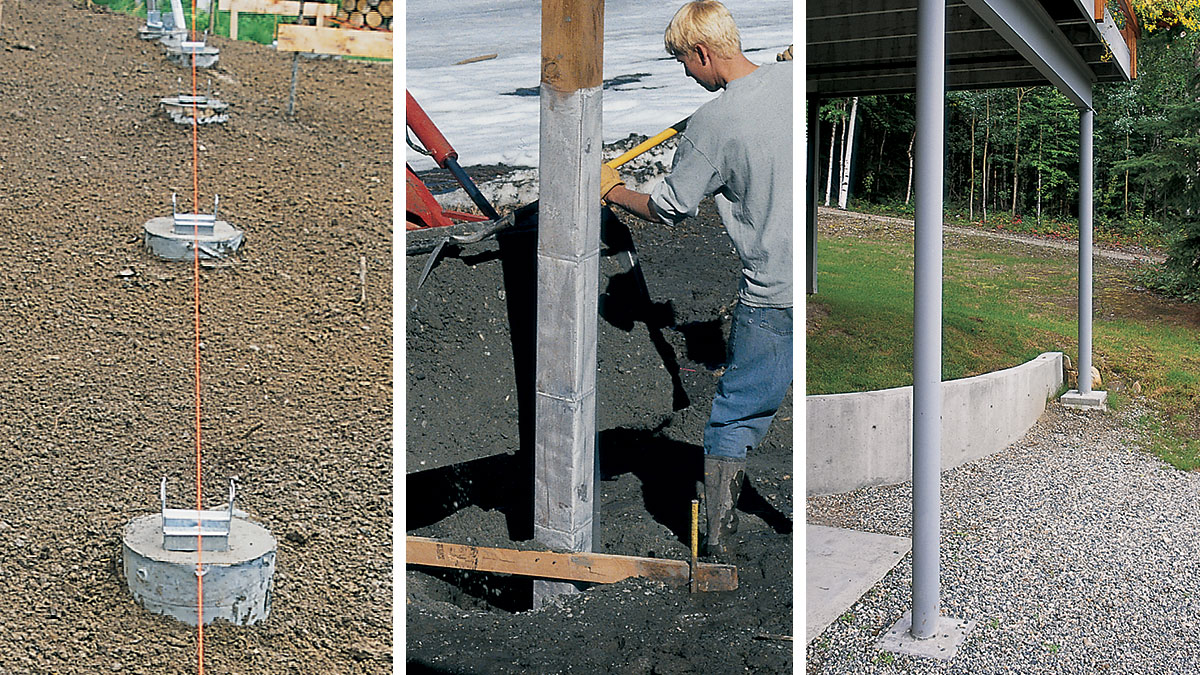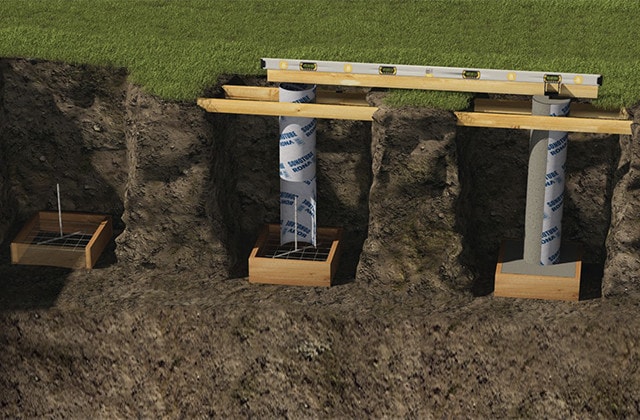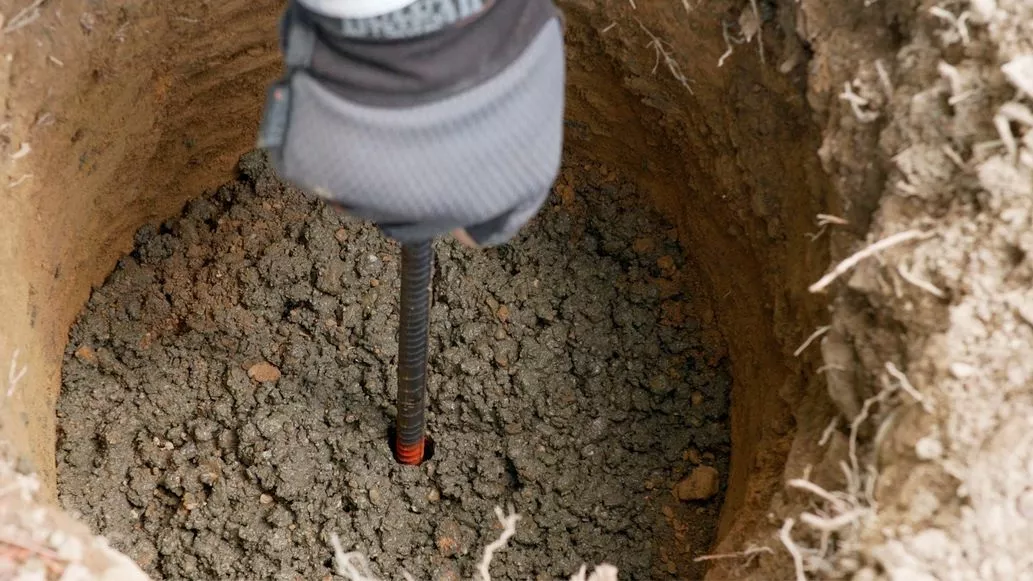Make Sure Security and Longevity With Effectively Set Up Deck Grounds
Deck grounds might not be the most attractive element of deck building, however they play an important role in ensuring security and durability. In this discussion, we will explore the importance of correct deck footings, elements to consider during installment, various types of footings available, detailed setup guide, and maintenance pointers for making sure resilient grounds.

Relevance of Proper Deck Footings
Why are correctly set up deck grounds crucial for the security and long life of your deck? The answer hinges on the essential duty that deck grounds play in supporting the weight of the entire structure. Deck footings are the structure on which the deck rests, moving the lots from the deck to the ground. When grounds are not correctly set up, it can cause an array of concerns that compromise the stability and longevity of the deck.
To start with, properly mounted deck grounds disperse the weight of the deck equally, preventing any uneven settling or sinking. This is particularly important in areas with unpredictable dirt, as it aids to minimize the threat of the deck moving or falling down. In addition, well-installed footings make sure that the deck stays level, avoiding any architectural damages that can take place when a deck ends up being unequal.
Secondly, properly mounted grounds offer a solid support for the deck, stopping excessive movement and sway. This assists to maintain the architectural stability of the deck, decreasing the risk of crashes or injuries. It also lessens the deterioration on the deck, enabling it to endure the components and routine use for a longer duration of time.
Elements to Consider for Deck Ground Installation
When mounting deck footings, there are numerous important elements to consider for appropriate installation. These aspects can significantly influence the stability and long life of your deck. You require to identify the kind of soil on which the deck will be constructed. Different dirt kinds have various load-bearing capacities, so it is critical to carry out a dirt test to make sure the grounds can support the weight of the deck and its passengers. Furthermore, the location and design of the deck need to be thoroughly intended to avoid any type of barriers such as trees, energy lines, or underground pipes. It is additionally crucial to take into consideration the local environment and weather, as these can affect the longevity of the footings. Areas with a high water table might require extra procedures to protect against water damages. Lastly, the dimension and product of the grounds ought to be selected based upon the dimension and weight of the deck, in addition to the neighborhood building codes and regulations. By considering these aspects, you can make certain the proper setup of deck footings and delight in a steady and resilient deck.
Sorts Of Deck Footings to Select From
There are a number of different kinds of deck footings available for you to pick from. Each kind has its own advantages and disadvantages, so it's essential to consider your details requirements and the conditions of your deck prior to choosing.
One common kind of deck ground is the concrete footing. This involves excavating openings in the ground and putting concrete into them to create a solid structure. Concrete grounds are long lasting and supply exceptional stability, making them appropriate for decks in areas with challenging dirt problems or high wind tons.
Another option is the helical pier ground, which is composed of a steel shaft with helical plates that are screwed into click resources the ground. These footings fast to mount and can be made use of in different soil kinds, consisting of sandy or clay soils. They are also flexible, enabling simple leveling of the deck.
Sonotube grounds are an additional prominent selection. These footings are created by positioning a cardboard tube in a hole and filling it with concrete. Sonotube grounds are relatively very easy to mount and offer adequate stability for smaller sized decks or in areas with less requiring soil problems.

When selecting the type of deck footing, it's crucial to consider elements such as soil conditions, deck size and weight, regional building ordinance, and personal preferences. By selecting the suitable footing type, you can guarantee the stability and longevity of your deck.
Step-by-Step Guide for Installing Deck Footings

Determine the place: Begin by marking the specific position of each ground making use of stakes and string (Deck Footings). Consider any local building ordinance or guidelines pertaining to problem ranges
Dig the holes: Utilize a blog post hole digger or an auger to dig the holes for the footings. Usually, a deepness of at least 36 inches is suggested for stability.
Degree the holes: Guarantee that the bottoms of the holes are level (Deck Footings). This can be accomplished by utilizing a level or a straight board across the top of the openings
Include crushed rock: Location a layer of crushed rock at the end of each opening to improve drainage and stop the ground from sinking right into the dirt with time.
Insert the footing forms: Put the footing forms into the holes, ensuring they are centered and level. Use stakes to secure them in position.
Mix and pour concrete: Follow the instructions on the concrete mix bag to prepare the concrete. Pour the concrete into the footing types, filling them totally.
Smooth the surface: Use a trowel to smooth the surface of the concrete and eliminate try this out any air pockets. Enable the concrete to cure according to the producer's instructions.
Maintenance Tips for Lasting Deck Footings
Appropriate maintenance is crucial for ensuring the longevity and stability of deck grounds. By routinely inspecting and maintaining your deck grounds, you can stop damage and potential safety risks. One essential aspect of upkeep is to consistently look for any type of signs of deterioration, such as splits or motion in the footings. If you notice any kind of problems, it is essential to resolve them without delay to prevent further damages.
Routine cleaning is likewise important for maintaining deck footings. Dust, debris, and plant life can gather around next the footings, which can result in moisture build-up and decay. Cleaning up the grounds routinely, making use of a brush or a pressure washing machine, can help protect against these issues and extend the life expectancy of your deck.
Along with cleaning, it is necessary to maintain the location around the grounds clear of any blockages. Stay clear of stacking items against the grounds or allowing plants to grow as well near to them. These blockages can catch dampness and cause the footings to weaken gradually.
Last but not least, regular resealing of the footings is suggested to shield them from moisture and other environmental elements. Applying a water-proof sealer can aid avoid water damage and prolong the life-span of the grounds.
Verdict
In verdict, proper installation of deck footings is important for ensuring stability and long life of your deck. Factors such as dirt kind, tons capability, and local building regulations require to be taken into consideration when picking the right kind of deck grounds. Adhering to a detailed guide for setup and regular maintenance will certainly aid to make certain the grounds stay durable and durable.
In this discussion, we will certainly explore the importance of correct deck grounds, variables to take into consideration throughout installment, various types of footings available, detailed setup guide, and upkeep suggestions for guaranteeing long-lasting grounds. Deck footings are the structure on which the deck relaxes, transferring the lots from the deck to the ground.One typical type of deck ground is the concrete ground. Place the ground types: Insert the ground forms right into the holes, guaranteeing they are focused and level.In verdict, proper installment of deck footings is essential for ensuring security and longevity of your deck.